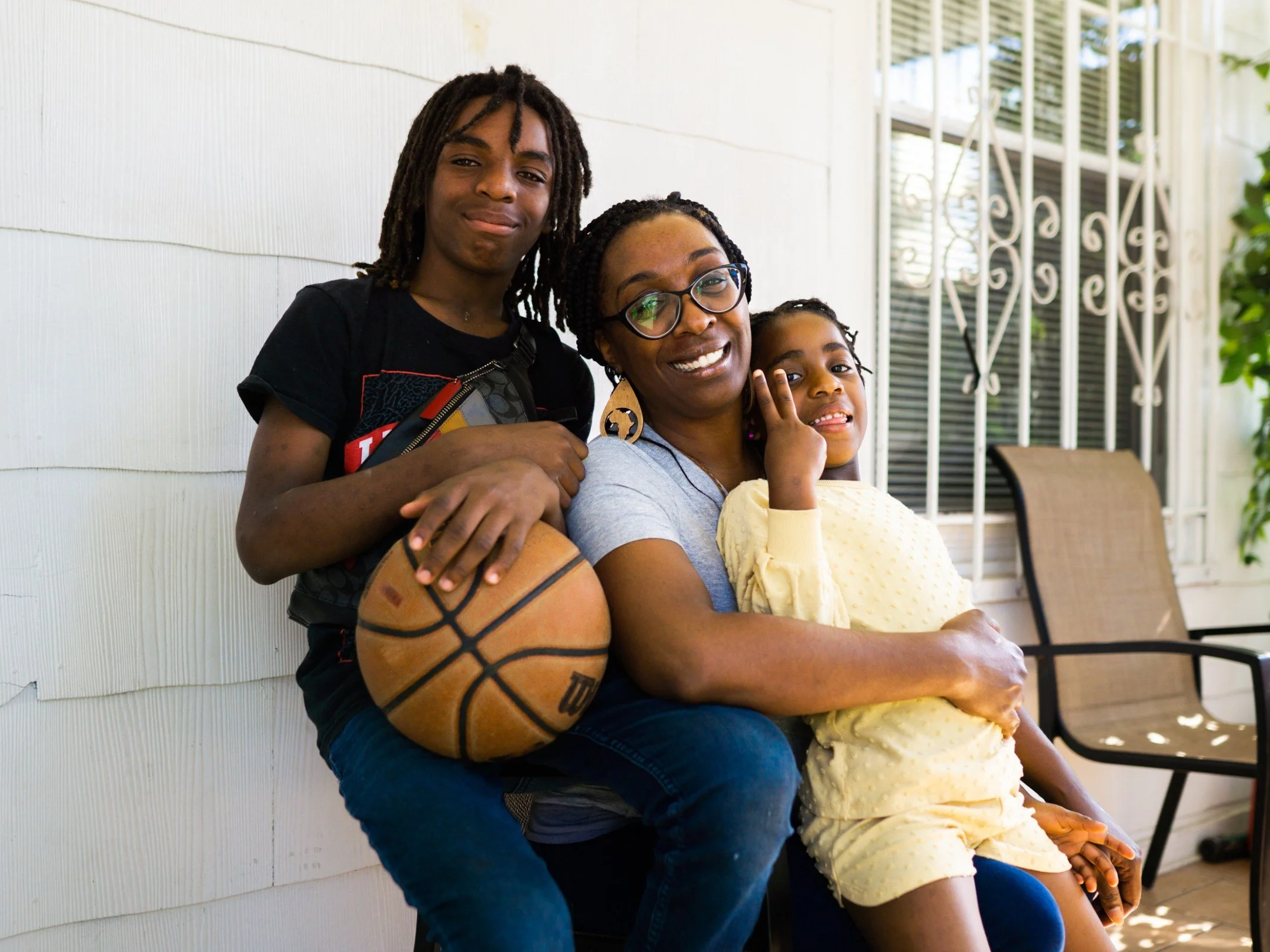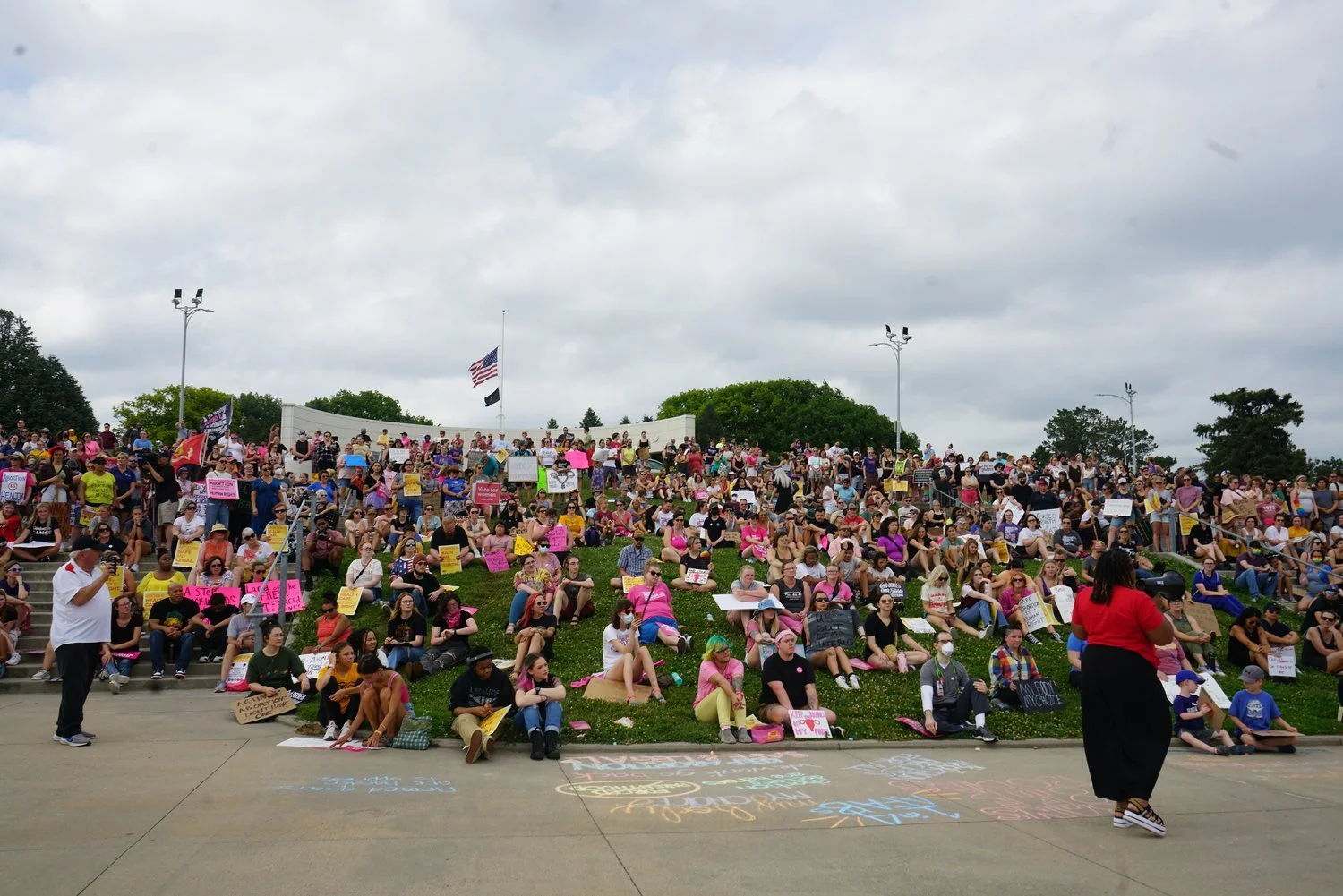After Second Pedestrian Death on N. 30th St., OTOC Pleads With City, Again
Lyndsay Dunn, NOISE
By Elle Love
Omaha Together One Community (OTOC) met with the City of Omaha Public Works Department in January of this year to discuss efforts to improve traffic regulations and pedestrian safety on N. 30th St. where two pedestrians were killed in separate incidents near a six-way intersection at Miller Park.
OTOC’s conversations with city officials from the Public Works Department, Tod Pfitzer and Jeff Riesselman have resulted in the city committing “to conducting a count of the number of pedestrians who cross this intersection.” The count will verify whether the pedestrian traffic satisfies federal requirements for a future traffic signal in this intersection. Riesselman indicated that the study would take place in the spring of this year.
“With so many neighborhood children, as well as elderly and handicapped persons trying to cross this intersection in order to access Miller Park and the neighborhood, it seems only sensible to put a stoplight in at this point.”
In a meeting with Vision Zero Omaha coordinator Jeff Sobczyk and the Public Works representatives, OTOC Member Clyde Anderson said the community previously brainstormed solutions to safety issues with the six-way intersection at 6100 North 30th St. Hazards include sidewalks not lining up east to west and unmarked crosswalks which can be perilous to pedestrians crossing the intersection.
Lyndsay Dunn, NOISE
“One of our recommendations was to put up signs advising pedestrians to walk 600 feet north to the signalized intersection at Curtis Street and cross there, which takes you into the main section of Miller Park,” Anderson said. “Our other recommendation implemented was converting Miller Park Dr. to one-way going away from 30th St. and that eliminates vehicles coming out of Miller Park Dr. to 30th St.”
In spite of these changes, another pedestrian fatality occurred at this intersection in January. Sheryl Bringleson of Omaha was fatally struck by a vehicle as she attempted to cross 30th Street at the south end of Miller Park, despite the new signage instructing people to walk up to the traffic light at Curtis Street.
“The doors have been opened to bring awareness to protect pedestrian safety,” wrote Nichole Schumacher in the OTOC press release. Schumacher is a leader at Trinity Lutheran Church located two blocks north of the intersection.
North 30th St. isn't the only area of focus for pedestrian safety in Omaha.
Creighton University, the Omaha Public Works Department, ModeShift and Heartland BCycle are collaborating on a study through a Mobility Data for Safer Streets grant from Spin, an electric bicycle and scooter sharing company.
ModeShift co-founder and former city council candidate Sarah Johnson said she and Creighton professor Ryan Wishart worked on the grant before collaborating with the Public Works Department and Heartland BCycle.
“We got two different sets of data tools, one is the streetlights, and the other are the Numina sensors that are going to be installed for a number of months. We’re going to be dividing the time between installing them around the intersection at 72nd and Dodge to identify pedestrian movements, how snow affects it, how drivers react to pedestrians, then we’ll be moving them to the Harney Street bike lane to observe some movements there as well.”
Numina sensors measure all kinds of curb-level activity including volume counts, paths, and traffic behaviors of travelers and objects in streets, according to their website.
The sensors will be installed at 72nd and Dodge during February and March and in the bike lanes on Harney St. in midtown in April and May.
Vision Zero Omaha coordinator Jeff Sobczyk said a task force is working on creating an action plan to improve pedestrian safety across the entire city.
He said the goal of the action plan would be to help change the existing culture from one that prioritizes vehicular movements towards one that prioritizes safety. That would include “all users, your bicyclists, your pedestrians, your drivers, and people that are taking public transit, which is very important,” Sobczyk said.
The action plan will be data focused. “This is kind of the key to every Vision Zero study,” he added. Vision Zero put out a request for proposals from national consultants who work throughout the country on transportation issues.
“We're going to be, most likely, putting a very concerted effort into reinvesting in communities and neighborhoods that see higher volumes of serious and fatal crashes,” Sobczyk said.
Creating the action plan will be a year-long process. “There'll be a lot of community involvement and outreach and a lot of media branding to really get the public aware of this. [...] And also to slow down the killer speeds, which [are] significant, which is one of the main reasons for any kind of fatality. So, speed-reduction strategies are going to be a priority.”












